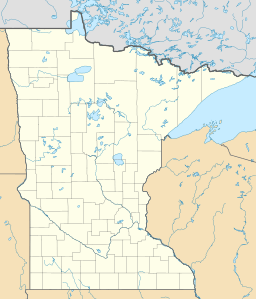Baker's Lake (McLeod County, Minnesota) facts for kids
Quick facts for kids Baker's Lake |
|
|---|---|
| Location | McLeod County, Minnesota |
| Coordinates | 44°40′45″N 94°20′57″W / 44.67917°N 94.34917°W |
| Type | Lake |
| Surface elevation | 1,017 feet (310 m) |
Baker's Lake is a lake located in McLeod County, in the U.S. state of Minnesota. It's a natural body of water that plays an important role in the local environment. The areas around the lake are specially protected to help wildlife thrive.
Discover Baker's Lake
Baker's Lake is a freshwater lake, meaning its water is not salty like the ocean. It's a popular spot for people who enjoy nature and outdoor activities. The lake is surrounded by beautiful landscapes that are home to many different plants and animals.
A Home for Animals
The land around Baker's Lake is very important for wildlife. On the western side of the lake, there is a Waterfowl Production Area. This is a special place set aside to protect wetlands and grasslands. These areas are crucial nesting and breeding grounds for many kinds of waterfowl, like ducks and geese.
South of this area, and to the east of the lake, you'll find the Baker's Lake Wildlife Management Area. A Wildlife Management Area (WMA) is a larger protected space where wildlife can live safely. These areas are managed by the state to conserve habitats and allow for activities like hunting, fishing, and wildlife watching. They help make sure that animals have enough space and resources to survive and grow.
Exploring the Lake
If you want to get out on the water, Baker's Lake offers a way to do that. There is "carry-in boat access" available on the eastern side of the Wildlife Management Area. This means you can bring your own small boat, like a canoe or kayak, and carry it to the water's edge to launch. It's a great way to explore the lake quietly and observe nature up close.
How Baker's Lake Got Its Name
Baker's Lake was named after an early settler in the area. A pioneer named Augustus C. Baker came to this region and settled near the lake in 1865. Pioneers were people who were among the first to explore and settle a new territory. Naming natural features after important local figures was a common practice during that time.


